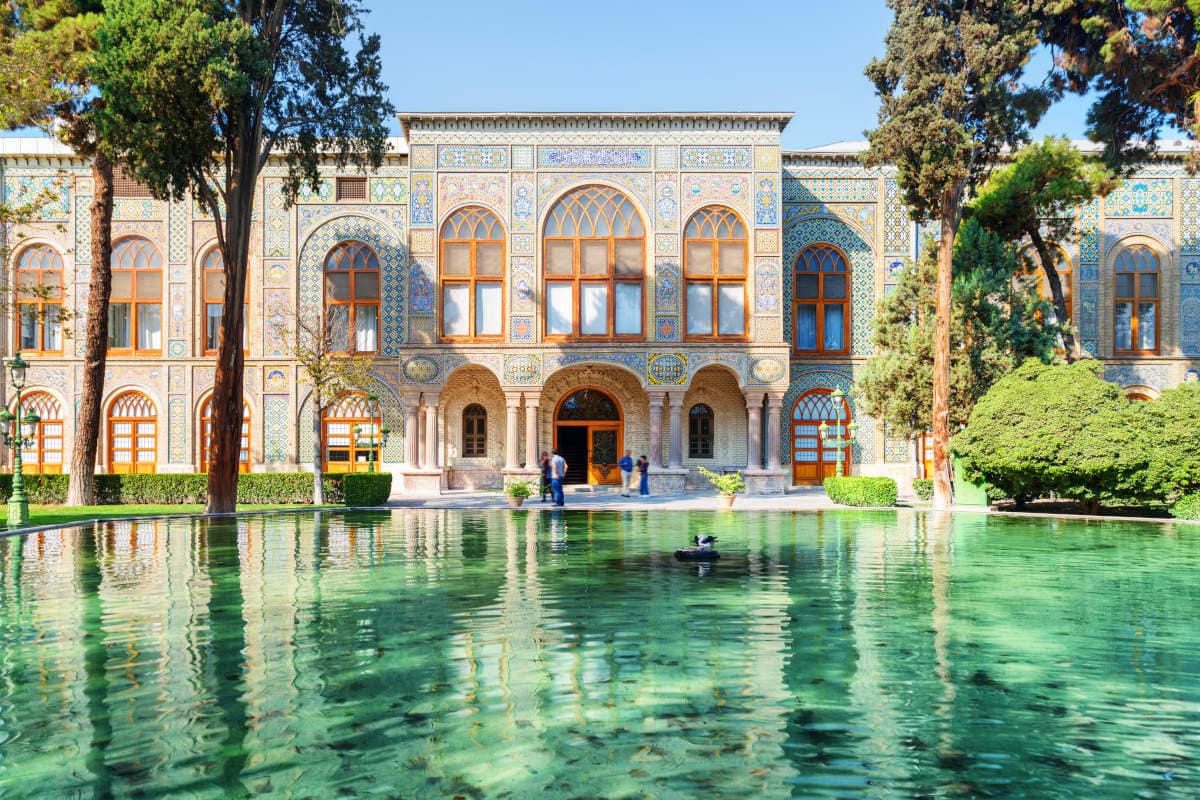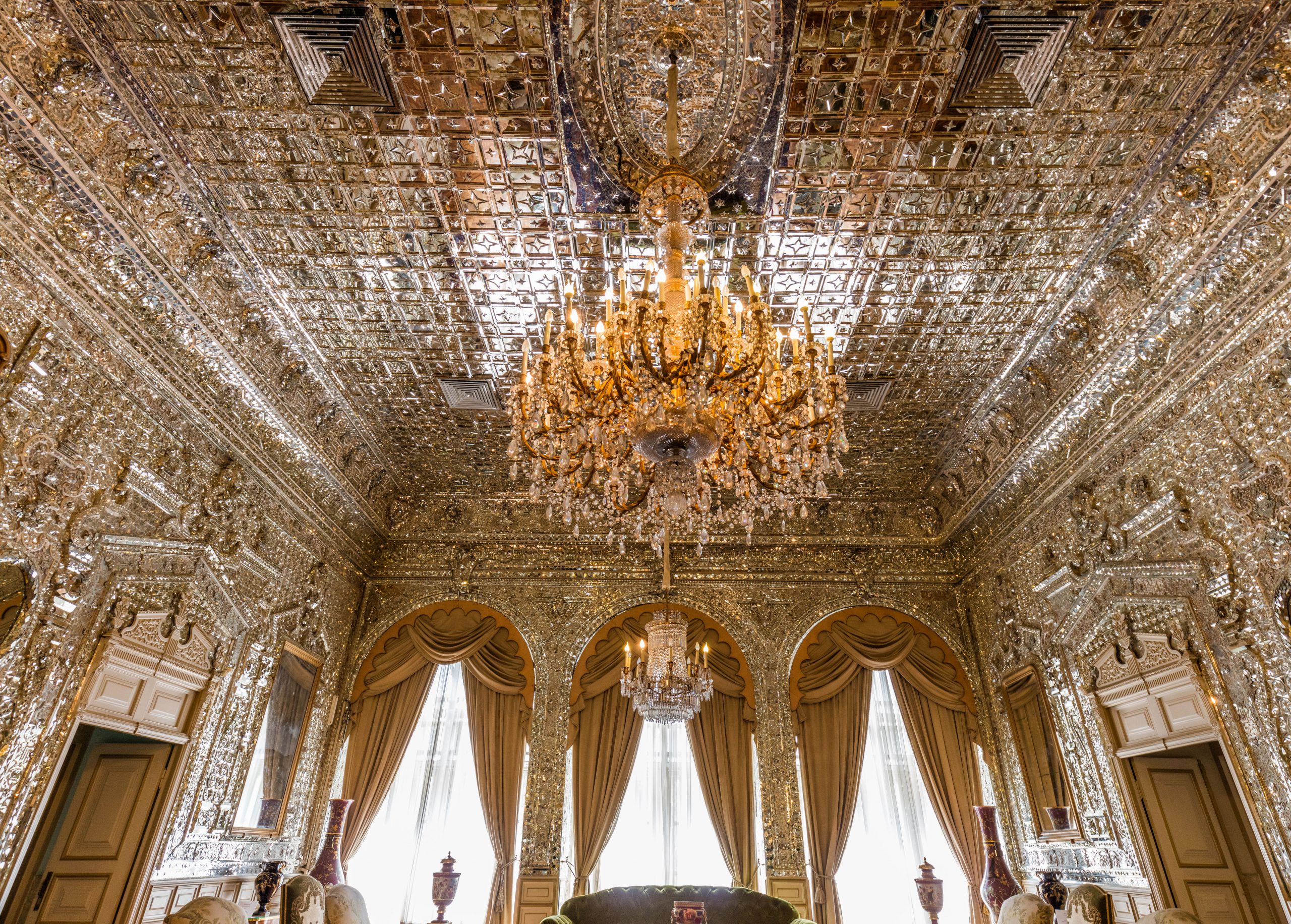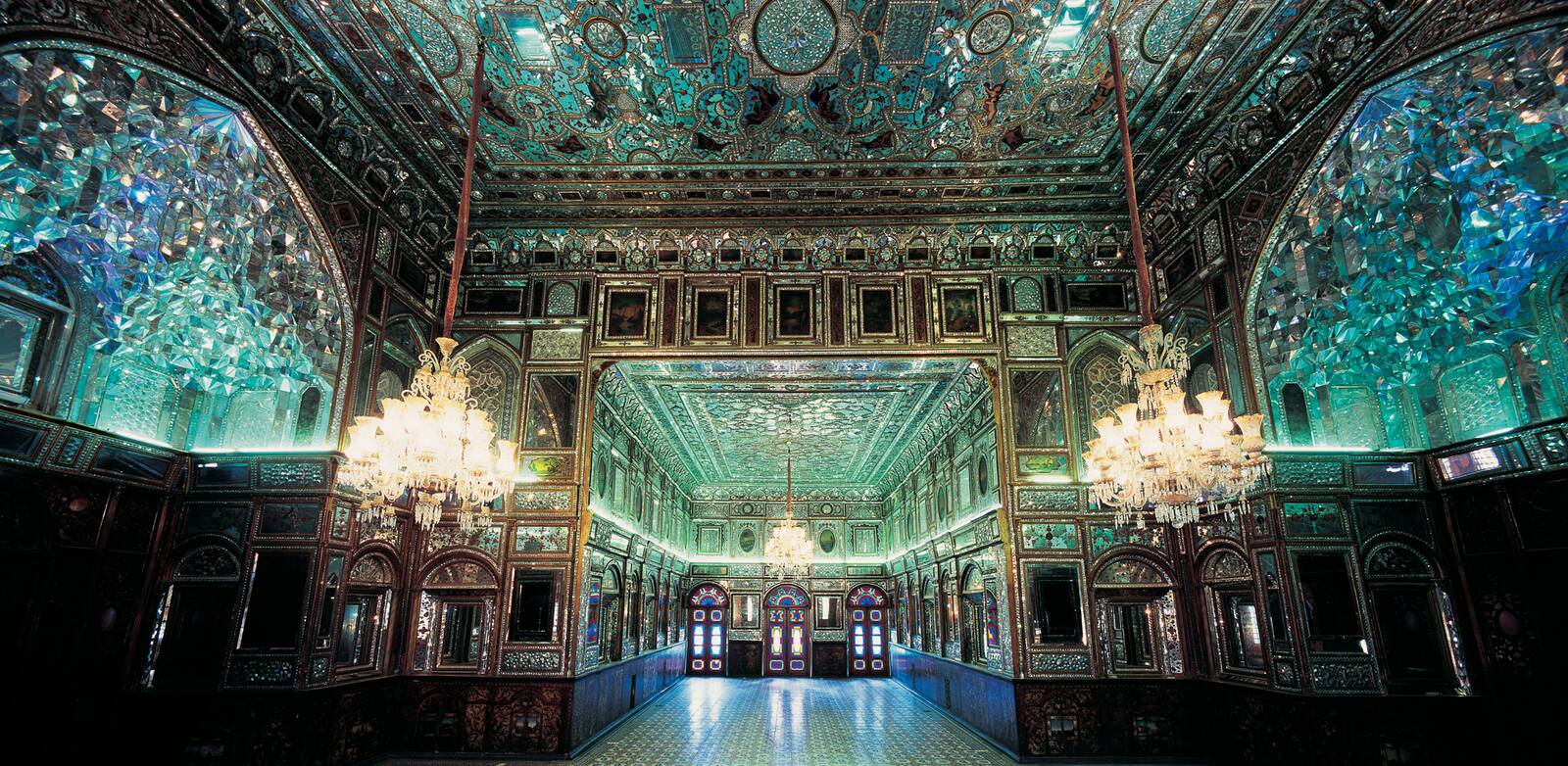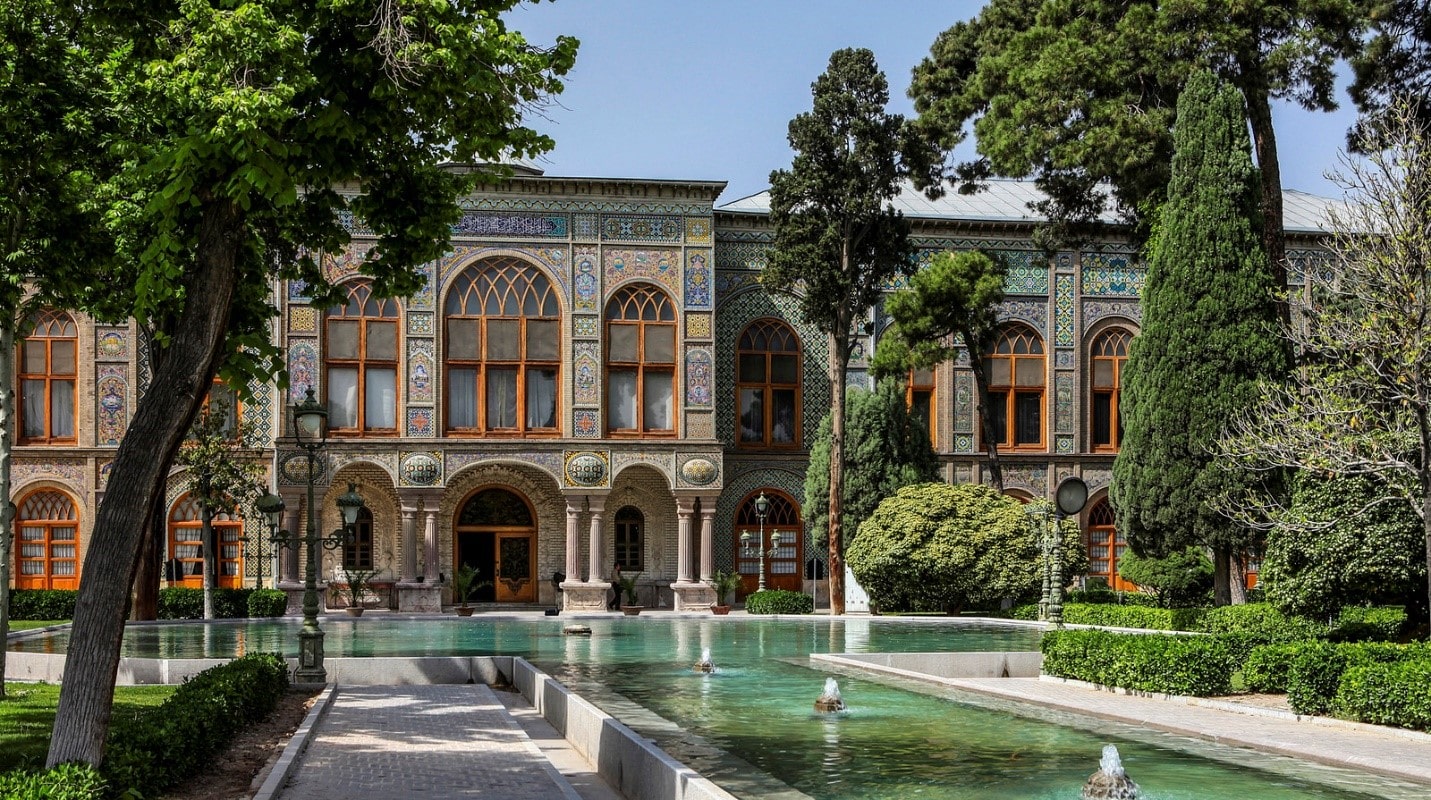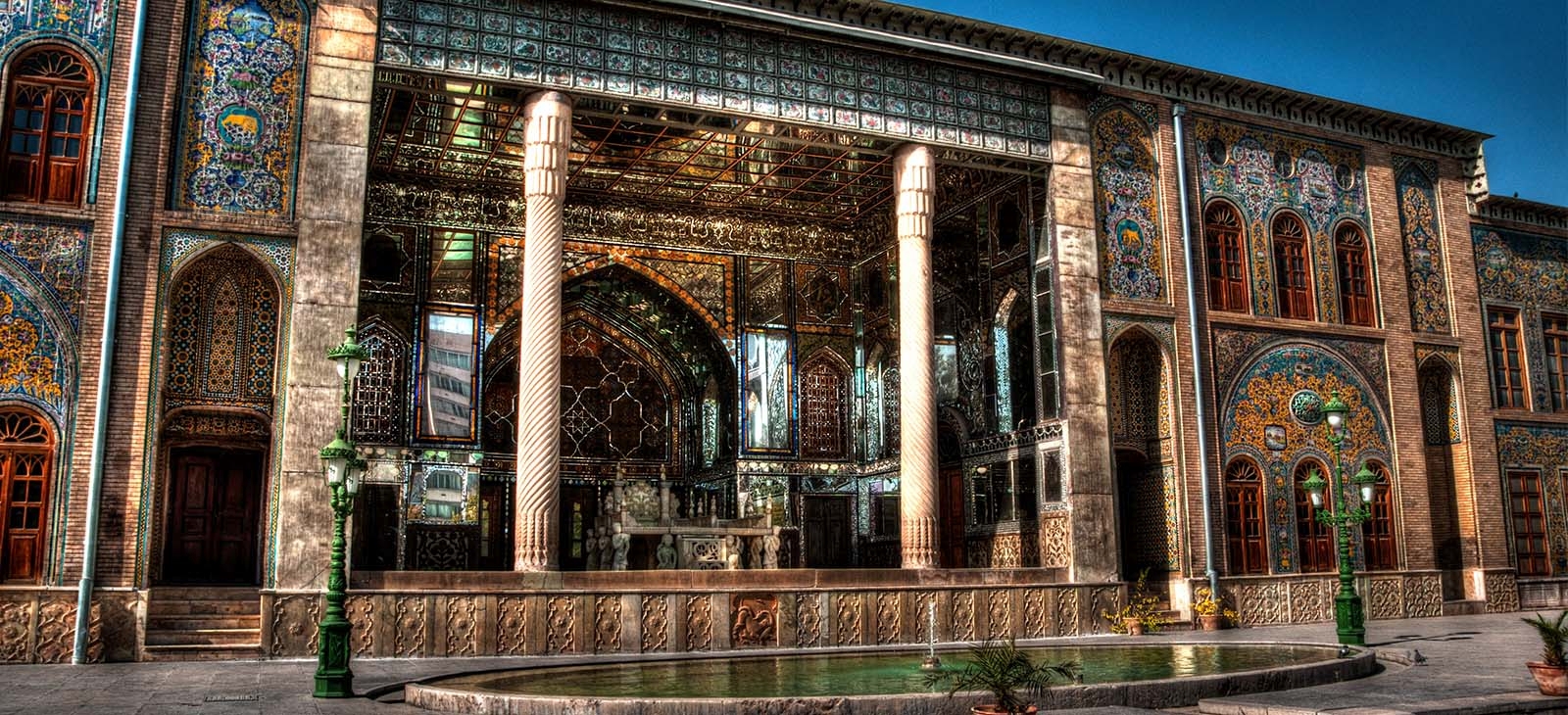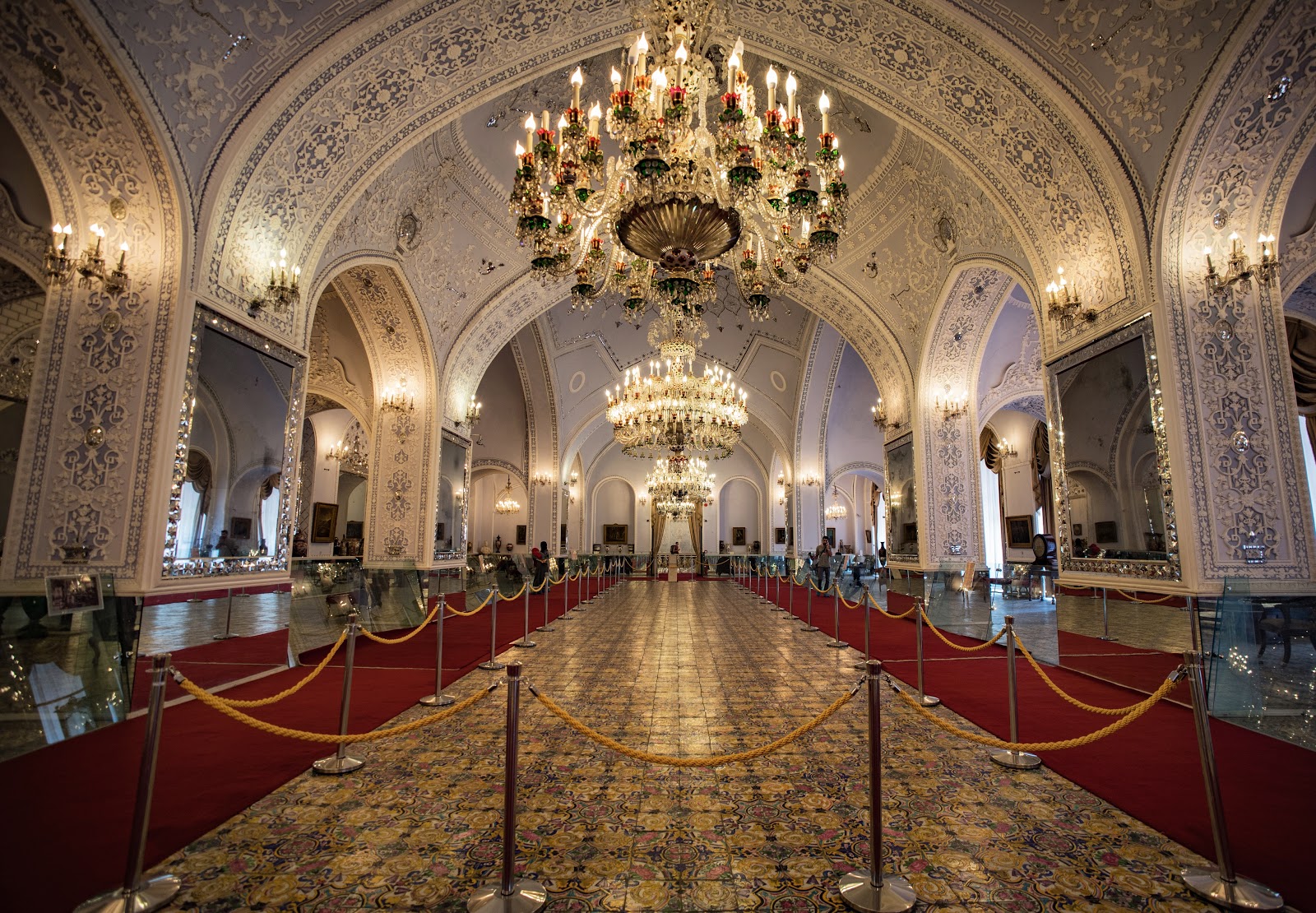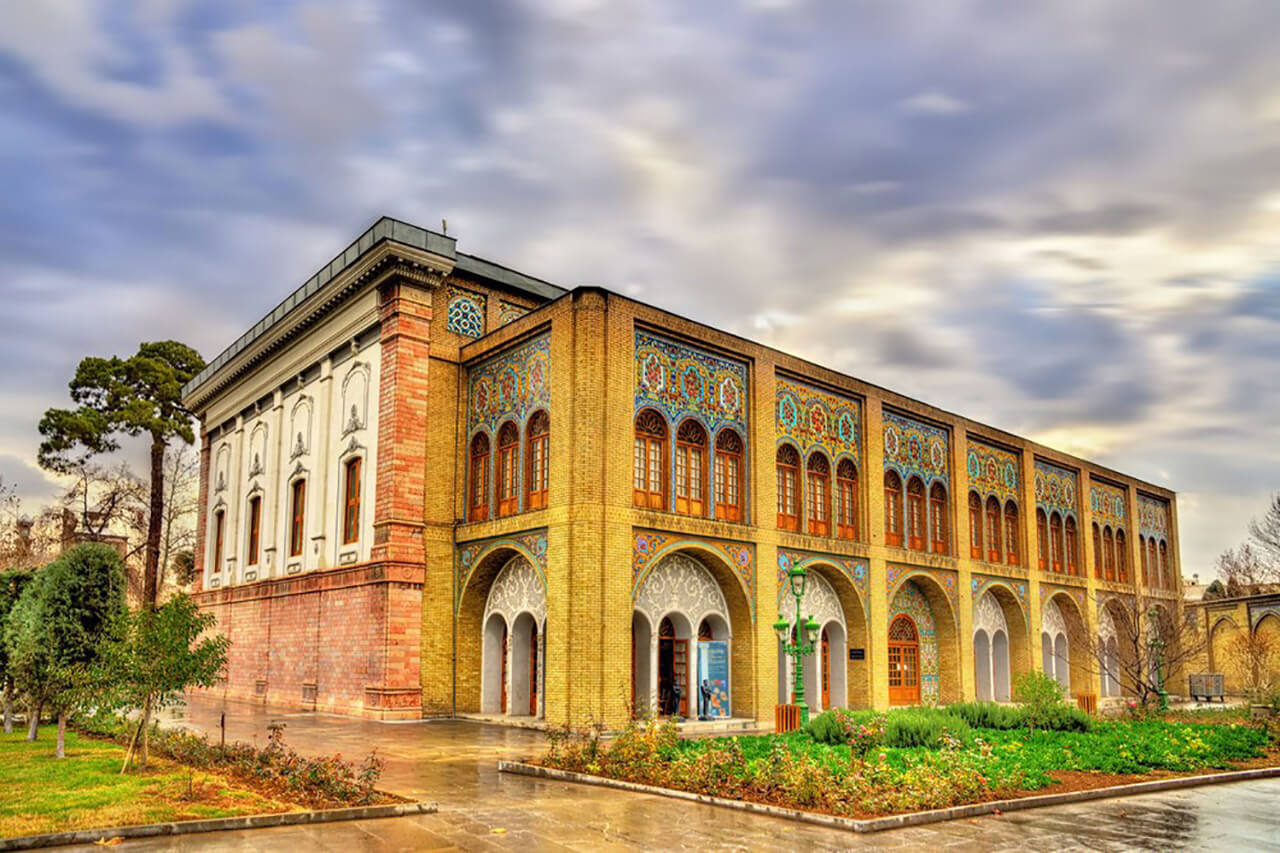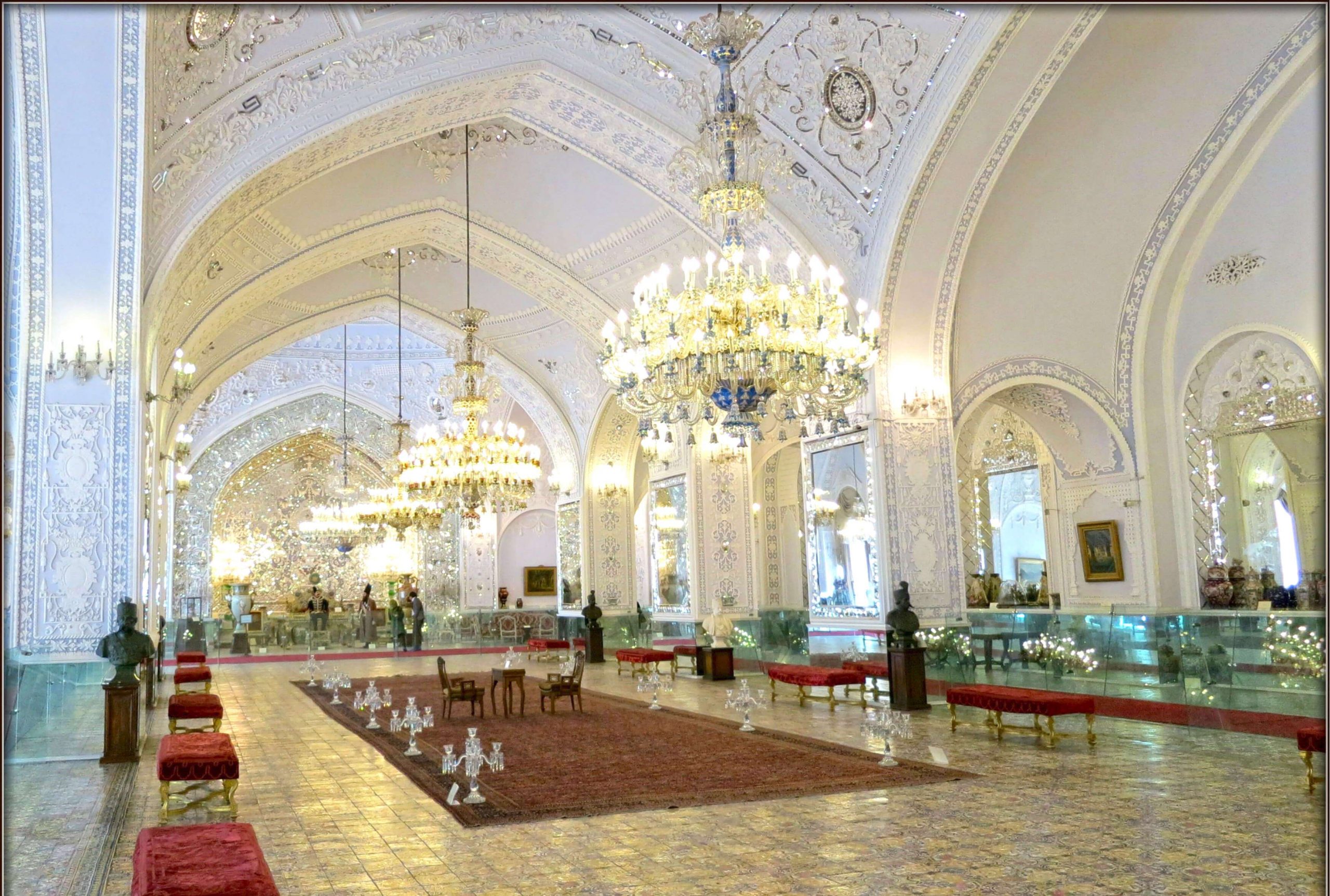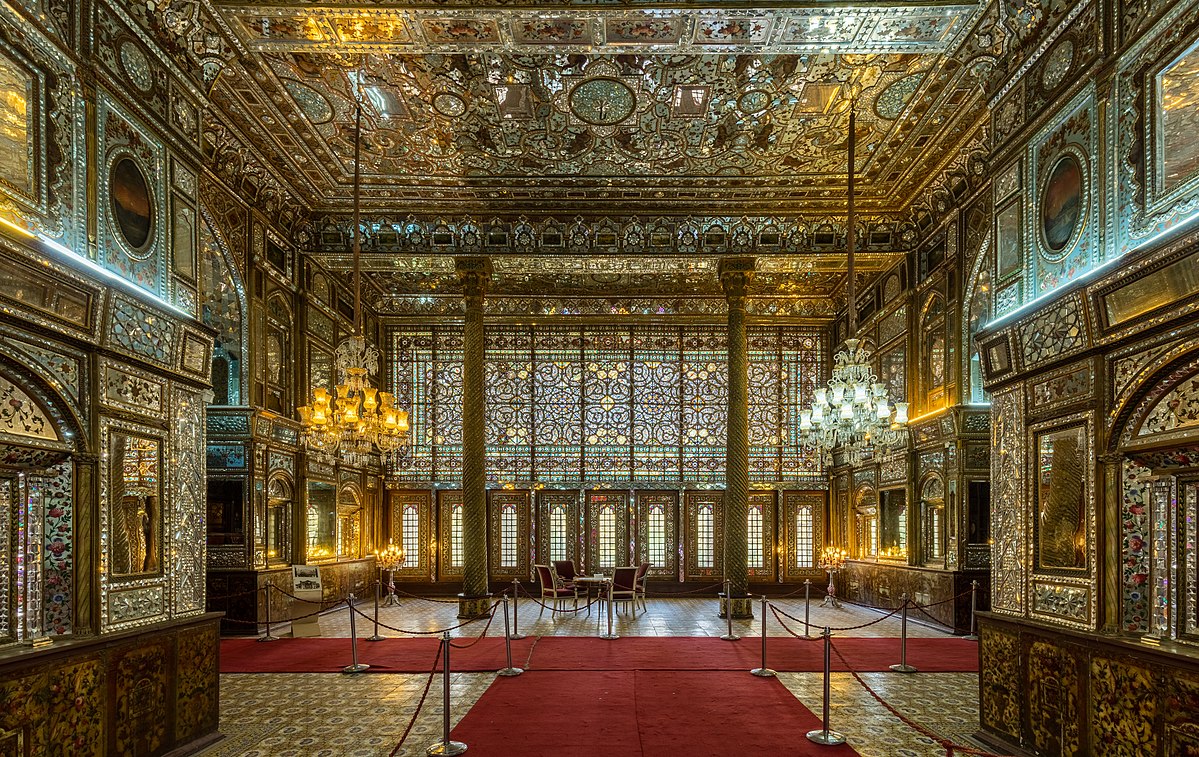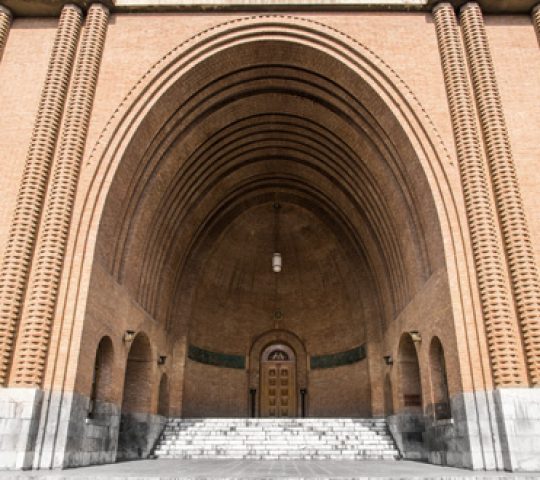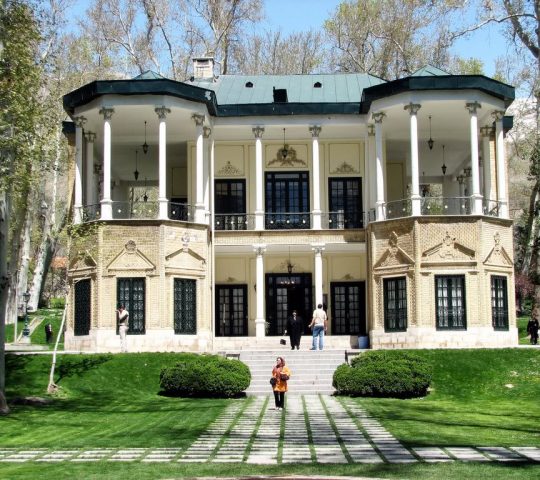Golestan Palace
Golestan Palace is the historical residence of the Qajar dynasty located in Tehran. The oldest building in the city, part of the complex of buildings, belongs to a group of buildings in the Arg of old Tehran. Golestan Palace was inscribed on the UNESCO World Heritage List in 2013.
The Arg collection is a certificate of art and architecture of the Qajar period, which includes designs and styles of European and Iranian art. In addition to being the residence of the rulers, this palace was also the residence and center of artistic creativity of this dynasty in the 19th century. This palace represents an important cultural and artistic period in the history of Iran in the nineteenth century, when Iranian society was undergoing a process of modernization and European influence: the values and experiences of art and architecture of ancient Iran in a new form with art and architecture that transition It had a long and significant integration and presented a new style.
Historical background of Golestan Palace
The Arg of Tehran was built during the reign of Tahmasp I (1524-1576) of the Safavid dynasty (1502-1736) and then restored during the reign of Karim Khan Zand (1724-1776). Agha Mohammad Khan Qajar chose Tehran as his new capital in 1783 and thus the Arg became a royal Arg during the Qajar period. Golestan Palace was rebuilt in 1865 by Haji Abolhassan Memar Navai.
During the Pahlavi dynasty (1925-1979), Golestan Palace was used only for official receptions. In Tehran, there were other palaces such as Saadabad Palace, which was the summer residence of kings, and the Niavaran Palace complex. The most important ceremonies held in Golestan Palace were the coronation of Shah Reza Pahlavi in 1925 and the coronation of his son Mohammad Reza Pahlavi in 1967.
In 1925-1945, part of the palace complex was demolished to make way for a new part of the city. Today, the palace has a museum that displays ceramics, jewelry, and weapons. At present, the Golestan complex welcomes tourists.
Golestan Palace and buildings and halls
Golestan Palace consists of 17 buildings including palaces, museums, and other buildings. Almost the entire complex was built during the 131-year rule of the Qajars (1796-1925) and the palaces were used for official ceremonies such as coronations and other important celebrations. This collection has a photo archive, a manuscript library, and a document archive.
Golestan Palace in its current state is the result of about 400 years of construction and Karim Khani Nook (Khalvate Karim Khani) is one of the oldest parts left. In their current location, each building represents a unique history.
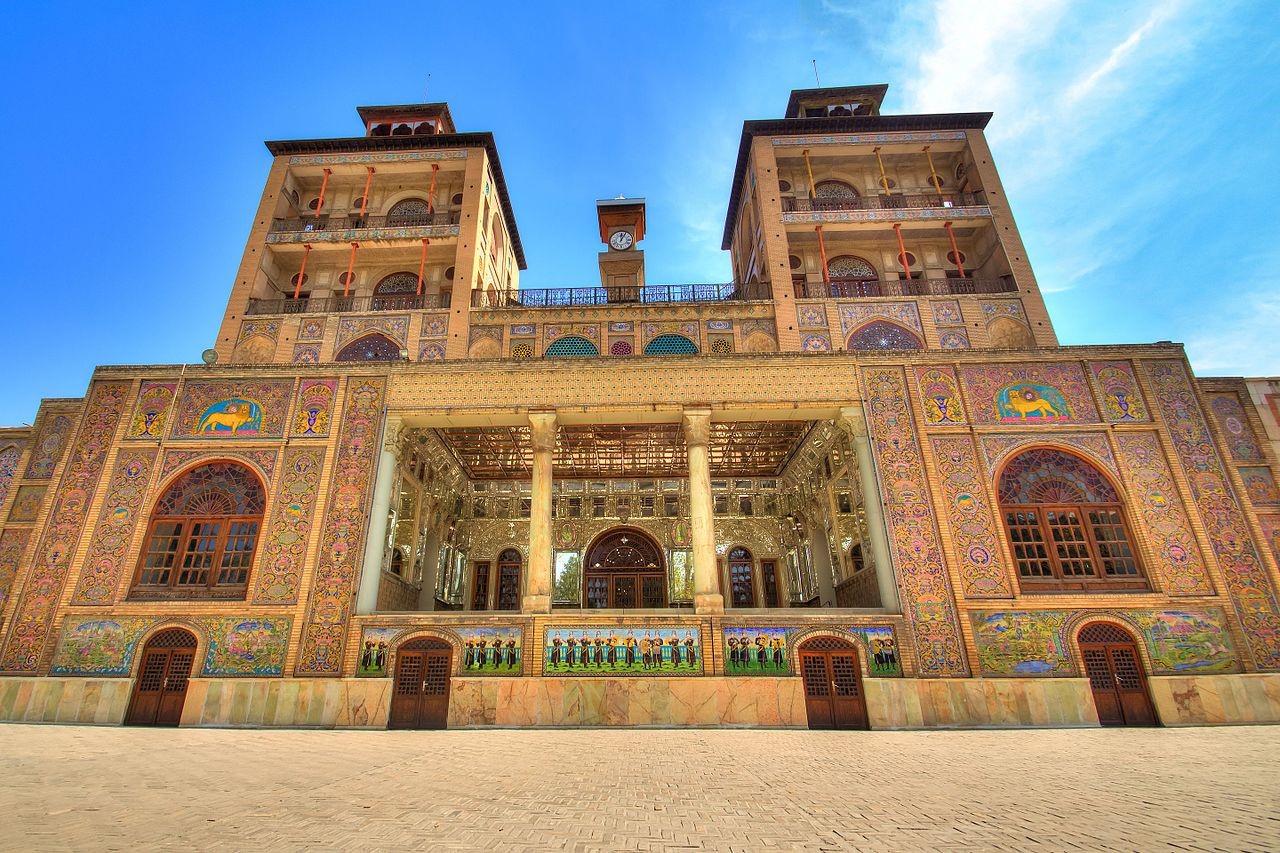
Edifice of the Sun (Shamsolemareh)
The building known as Shams Al-Amara (Edifice of the Sun) is one of the most prominent buildings in the complex due to its height and decorations. This building is a combination of traditional Iranian and European architecture.
It was built by order of Nasser al-Din Shah before his first trip to Europe. The king’s knowledge of European architecture gave him the desire to have such a tall building by which he could see the view of his capital from above. Work began in 1865 and was completed two years later under the supervision of Dost Ali Khan Nizam al-Dawlah, but apparently, it was designed by Ali Mohammad Kashi.
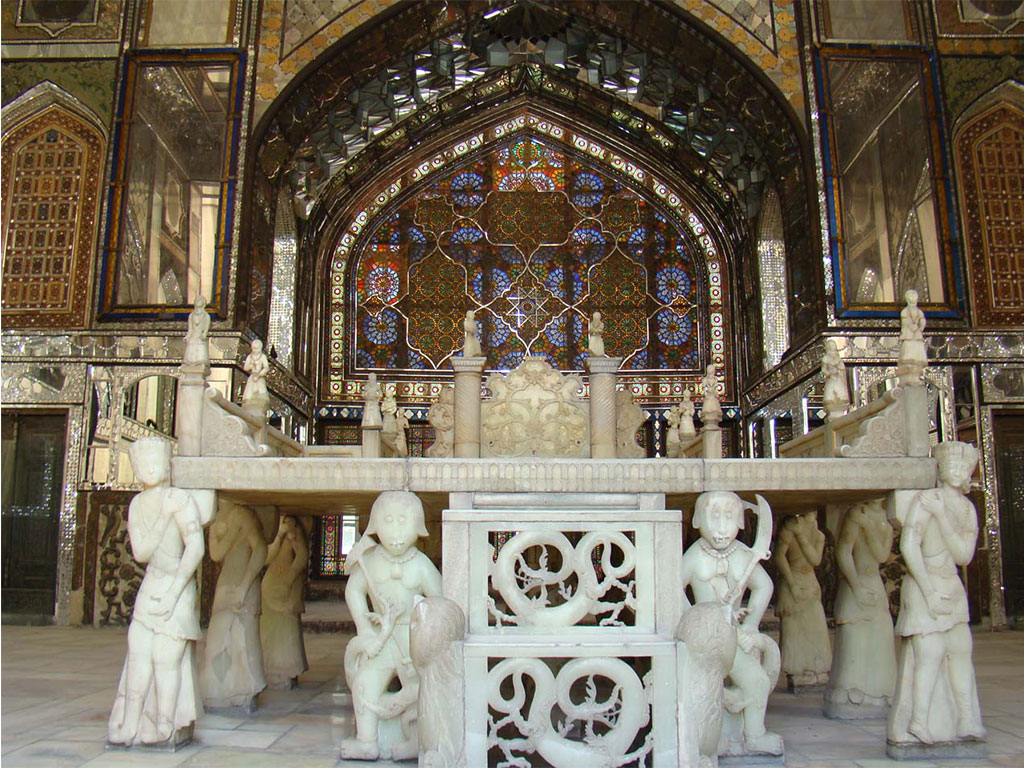
Marble Throne (Takhte Marmar)
The marble Throne known as the Takhte Marmar, located in the central part of the palace, is one of the oldest objects in the historic Arg, built-in 1806 by order of Fath Ali Shah. The bed is made of 65 pieces of yellow marble of Yazd and decorated with paintings, reliefs, tiles, bedding, mirrors, enamels, this is an example of the best Iranian architectural sculptures.
The marble throne was made by the senior artist of the Qajar court, Mirza Baba Shirazi Naghashbashi. This work was supervised by Professor Mohammad Ibrahim Isfahani and many famous craftsmen of that time were involved in its execution. Some details of the throne and the porch on which this throne is located were completed during the reign of Nasser al-Din Shah Qajar. This porch was used for the coronation of Qajar kings and other official ceremonies such as the annual celebration of Nowruz.
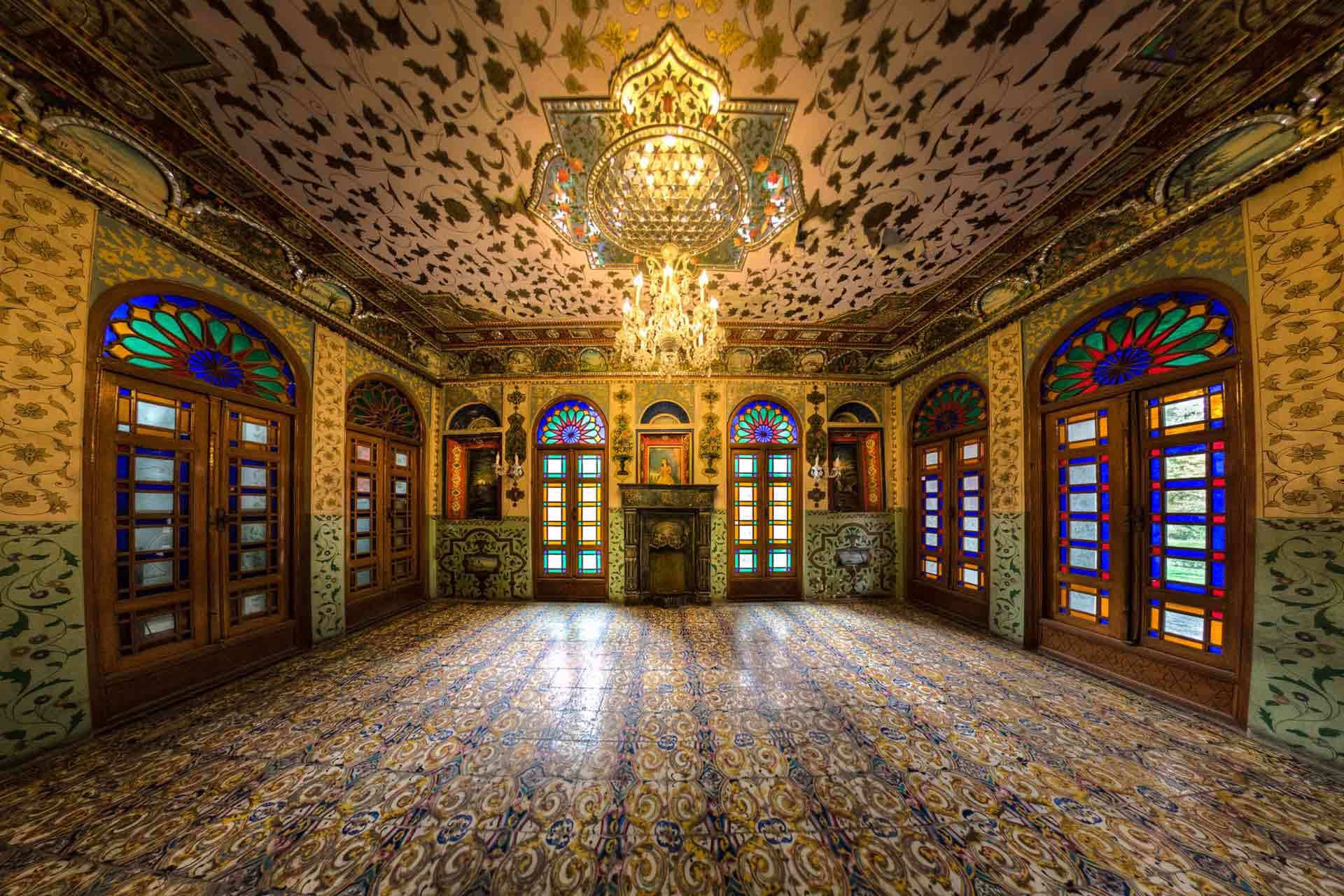
Photographic archive (Negar Khane)
During his second visit in 1872, Nasser al-Din Shah was influenced by European museums and ordered that a room be built in the palace to display paintings, royal jewelry, and other objects. The original collection is now scattered in various museums in Tehran, but the paintings remain in Golestan Palace.
Iranian works are presented in two parts, which are arranged in such a way as to highlight the evolution of Iranian painting during the Qajar period. In the southern part of the gallery, there are paintings by early Qajar artists such as Mirza Baba, Mehr Ali Afshar, Ali Akbar Khan Mozayyan al-Dawlah, and Abul Hassan Sania al-Mulk (Kamal al-Mulk’s uncle). The northern part was the place of the Royal Guard during the reign of Mohammad Reza Shah Pahlavi. After a major reconstruction in 1995, the works of the late Qajar artists such as Mahmoud Khan Saba Malek al-Shoara, Mohammad Ghaffari Kashani Kamal al-Mulk, and Mehri and Musa Momayez have been included.
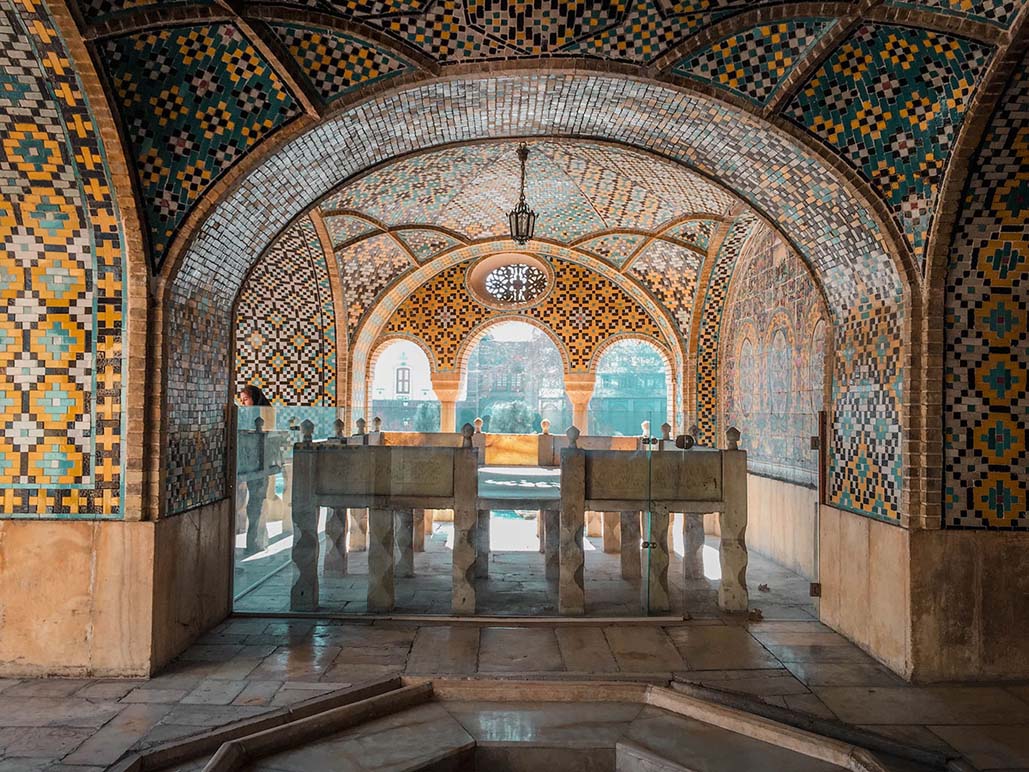
Karim Khani Nook (Khalvate Karim Khani)
Karim Khani Nook is part of the interior of the residence of the Shah, Karim Khan Zand (1750-1779), which was built in 1759. It now includes an arched porch or courtyard for private or informal gatherings. Inside there is a smaller marble platform and much simpler decorations than a Marble Throne. In the middle of the porch, there was a pool with a fountain that was fed by the royal aqueduct that came down from Alborz, and its water was used to irrigate the palace.
In the time of Karim Khan, the middle room was between the Shah’s private house and Golestan Palace and the office room (courts), and the palace ceremonies (marble throne). Nasser al-Din Shah Qajar (1848-1896) destroyed most of the courtyard and blocked the passage, creating a corner in its current structure where he often spent quiet moments smoking a hookah. Nasser al-Din Shah’s own tombstone was finally moved to this point after many relocations.

Salam Hall (Talare Salam)
The Salam Hall (reception room) or hall museum was built after Nasser al-Din Shah’s first visit to Europe in 1873. Travelers and diplomatic representatives from Europe reported on the splendor of the hall during the reign of Nasser al-Din Shah, which housed the Peacock Hall (Talare Tavoos) as well as the Peacock Throne. Part of the royal collection includes European paintings, various valuable gifts received by the imperial court of Iran, and numerous jewels and precious stones. During the Pahlavi era, the Peacock Throne (Takhte Tavoos) and jewelry were transferred to a museum known today as the National Jewelry Museum, and the hall was intended for official ceremonies, especially the coronation of Reza Shah and Mohammad Reza Shah Pahlavi. In this hall, there are still valuable objects and paintings by Iranian artists such as Kamal Al-Molk. In addition to the stucco relief, the walls and ceiling are good examples of Persian-style mirror decoration.
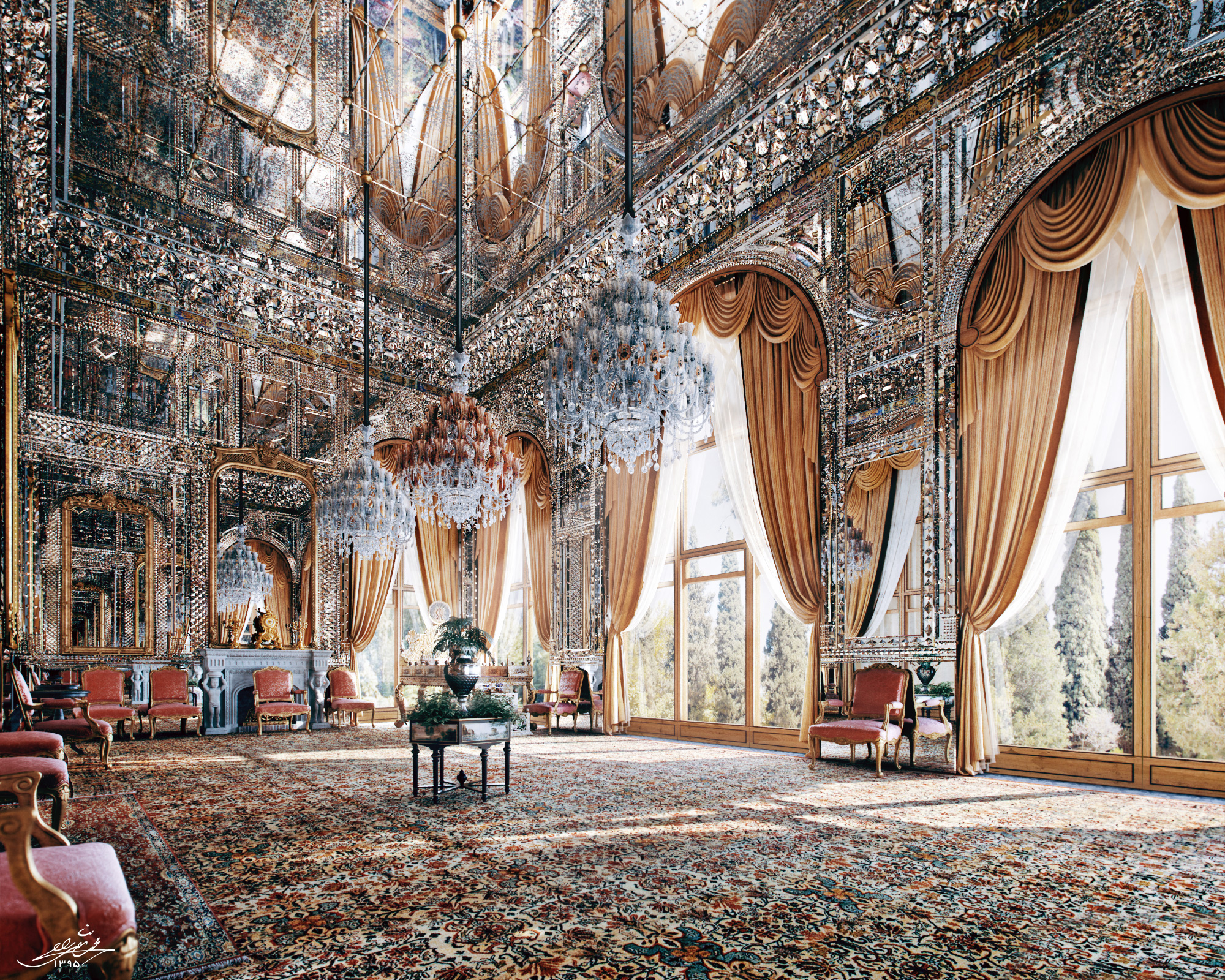
Mirror Hall (Talare Ayeneh)
Mirror Hall is one of the most prominent halls of Golestan Palace, which despite its small size is very famous for its mirror decorations.

White House (Kakhe Abyaz)
The White House was built to collect numerous gifts sent to Nasser al-Din Shah by the Ottoman Sultan Abdul Hamid II. It was completed in 1883 and since 1968 it has housed the Anthropological Museum of Tehran with an exhibition of Iranian clothing, traditional arts, and handicrafts.
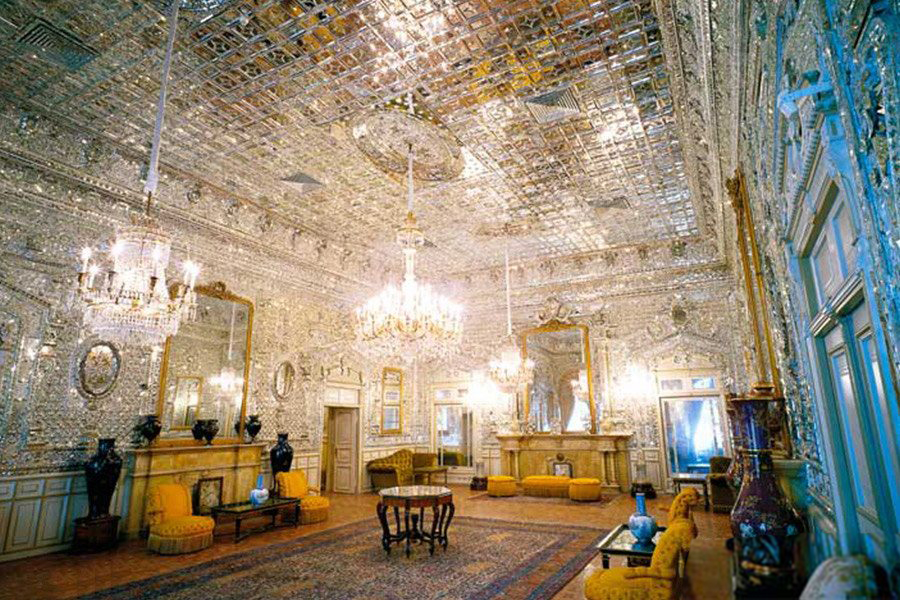
Diamond Hall (Talare Almas)
The Diamond Hall, or Shining Hall, takes its name from the elaborate mirror work that covers the columns, walls, ceilings, and chandeliers. By the order of Nasser al-Din Shah, this hall replaced the previous glass hall built by Fath Ali Shah, the second Qajar king (1834-1797), and the previous hall was destroyed. A painting by Yahya Khan San al-Mulk Ghaffari kept in the palace shows the decoration of the hall before the restoration of Muzaffar al-Din Shah (1907-1896).

Ivory Hall (Talare Adj)
To the west of the Diamond Hall is the Ivory Hall, which was built during the reign of Nasser al-Din Shah after the Reception Hall and the Hall of Mirrors, and at that time was used to display the gifts received from the foreign court.

Building of Windcatcher (Emarate Badgir)
Badgir Building, the place of coronation of Muzaffar al-Din Shah in 1896, was built around 1806 AD during the reign of Fath Ali Shah and was extensively rebuilt during the reign of Nasser al-Din Shah (1848-1896) with structural changes. The pre-restored building is depicted in the works of the artist Mahmoud Malek al-Shoara (1811-93).
The name of this building is taken from four “wind towers” which is a traditional cooling system in Iranian architecture that is covered with blue, yellow, and black tiles and a golden dome. The towers that supply the pool air below the central room of the building cool it by filling the pond with water coming from the Alborz mountain through the aqueducts. These towers are the only towers decorated with Moarraq in Iran. This central room is completely covered with plastered, mirrored decorations, paintings, and the finest stained glass windows in the palace complex, between carved wooden doors. The building is surrounded by two balconies known as “Gushvar” (corner-like).
Berlian Hall (Talare Berlian)
The palace is located on the south side of the palace next to the windbreak mansion and has earned its name due to its exceptional mirror decoration. This hall was built during the reign of Fath Ali Shah. Nasser al-Din Shah restored it by replacing the pointed arches of colored windows with round arches and covering the walls with wallpaper imported from Europe.

